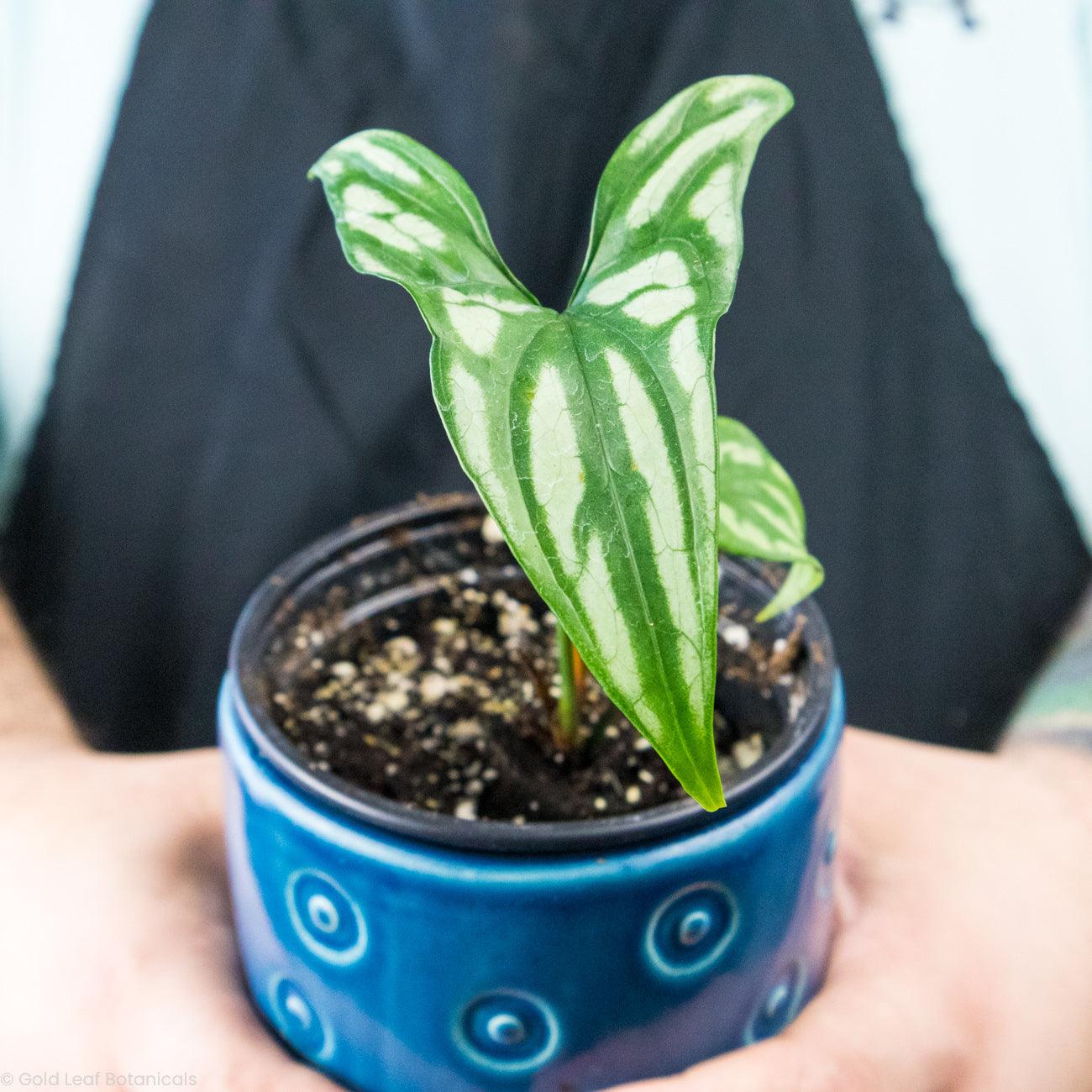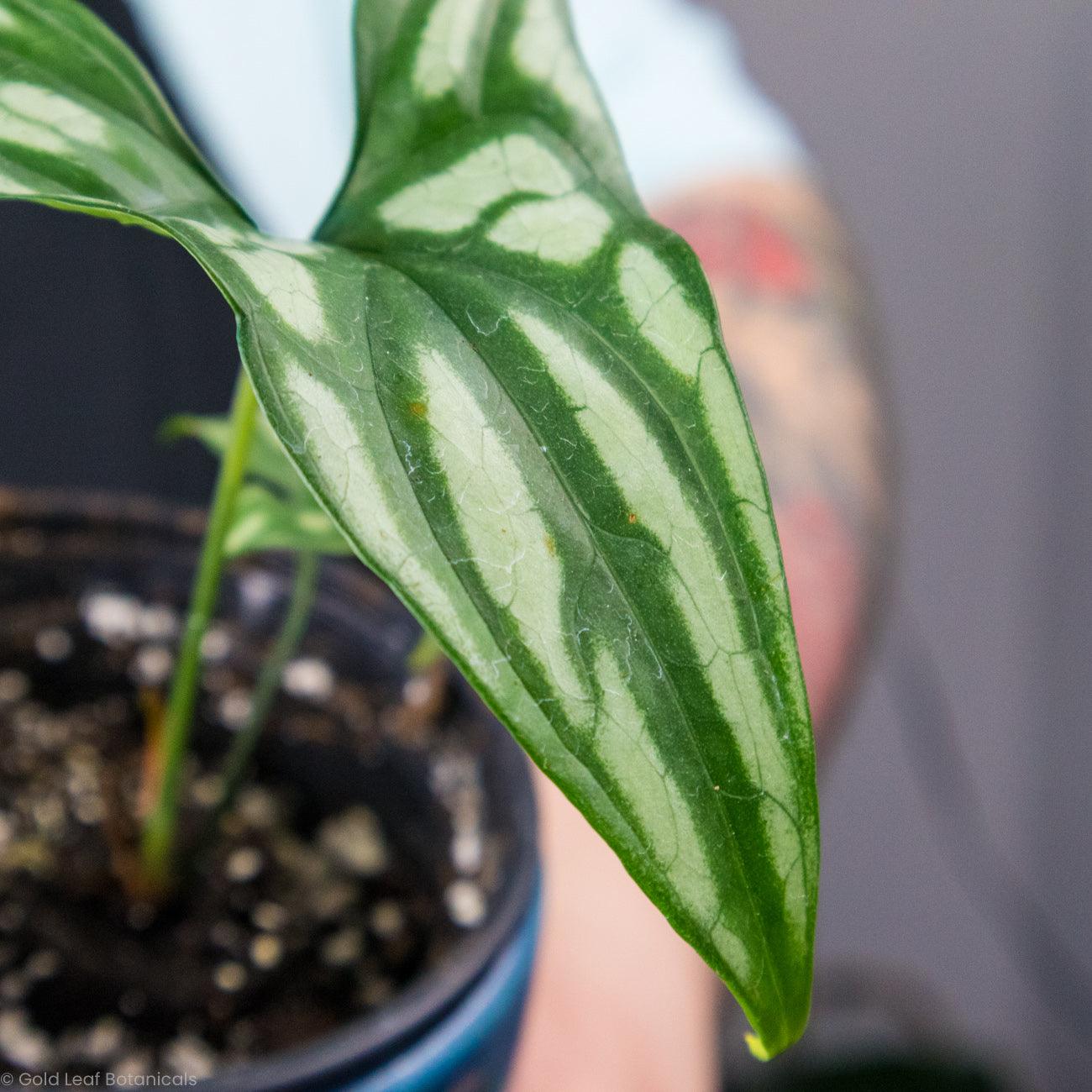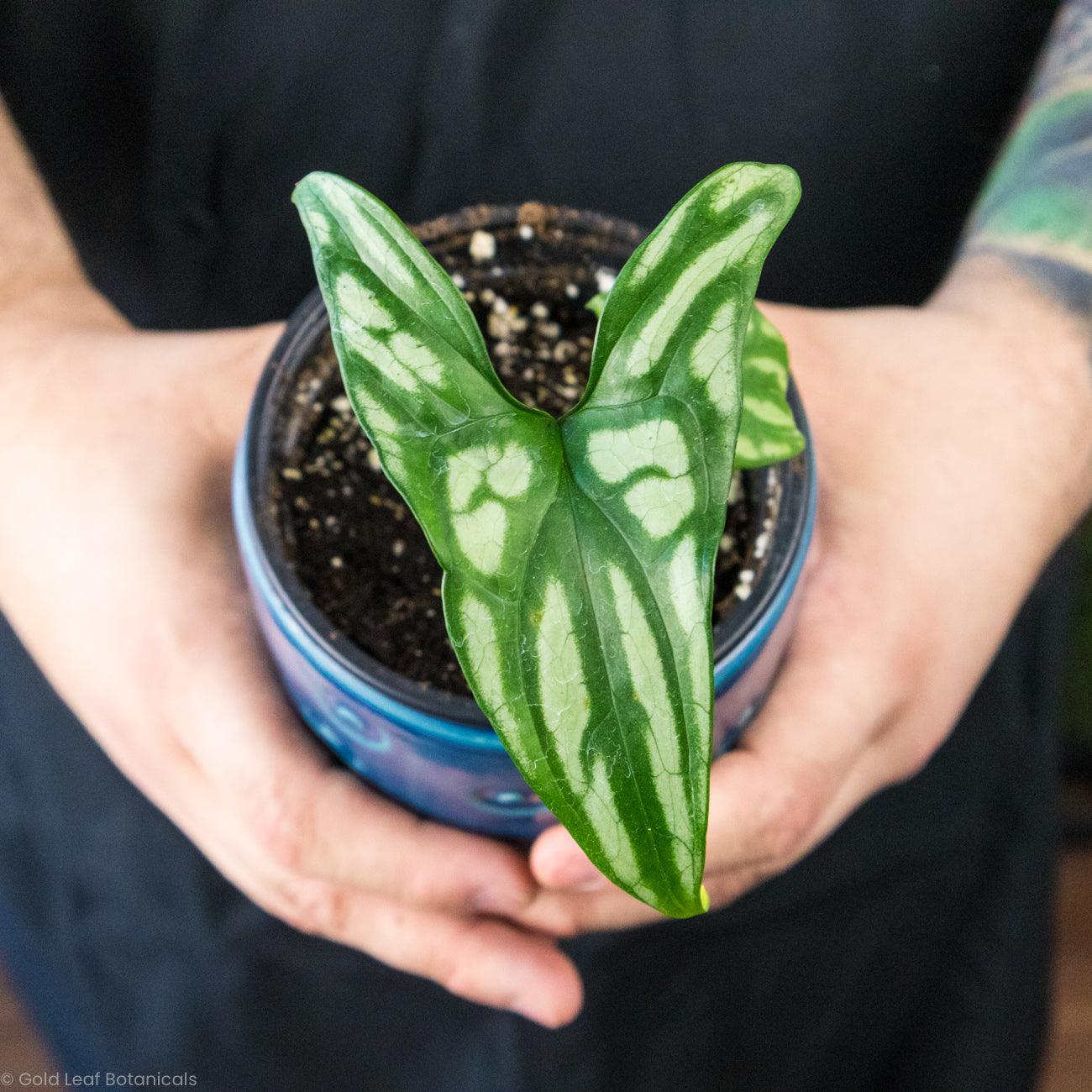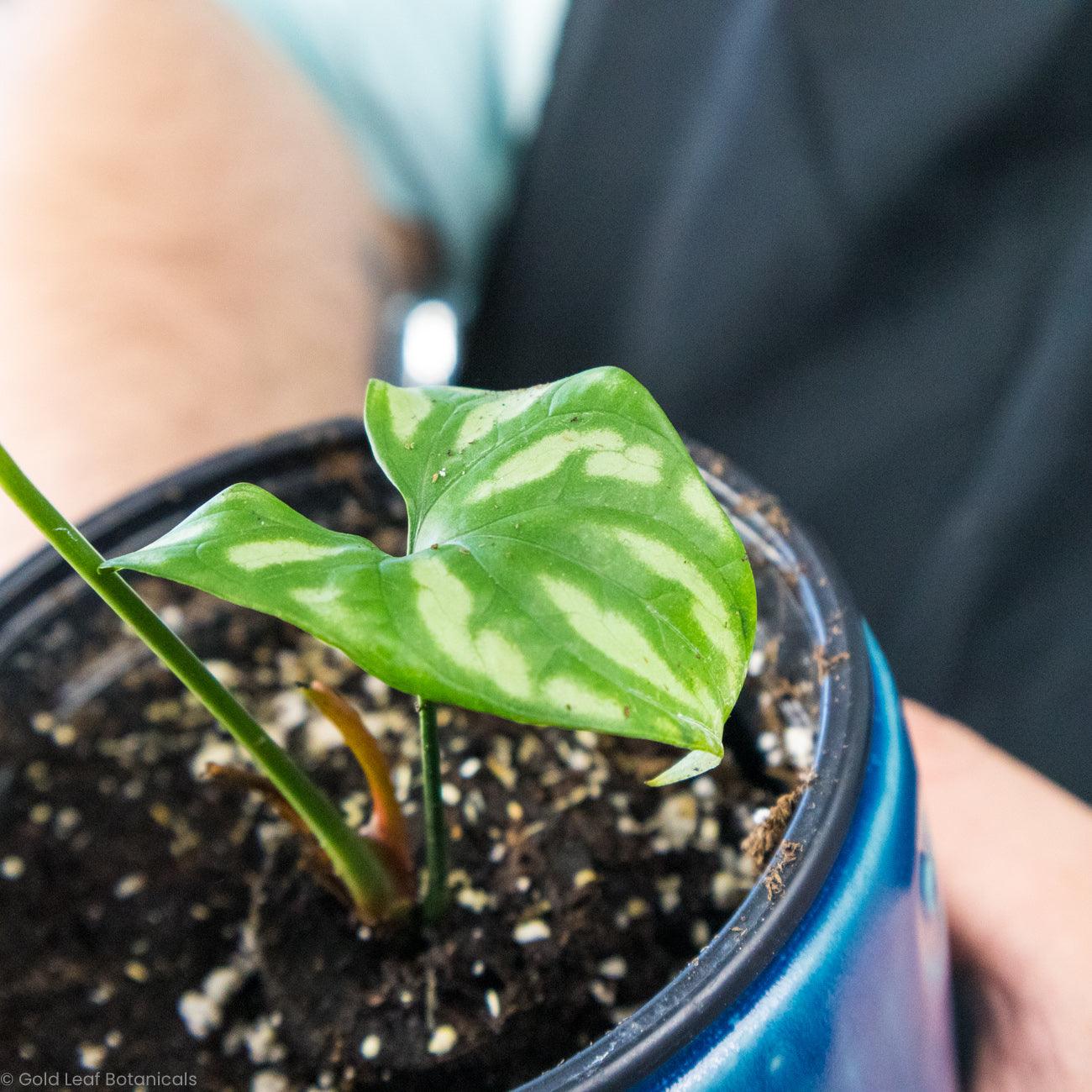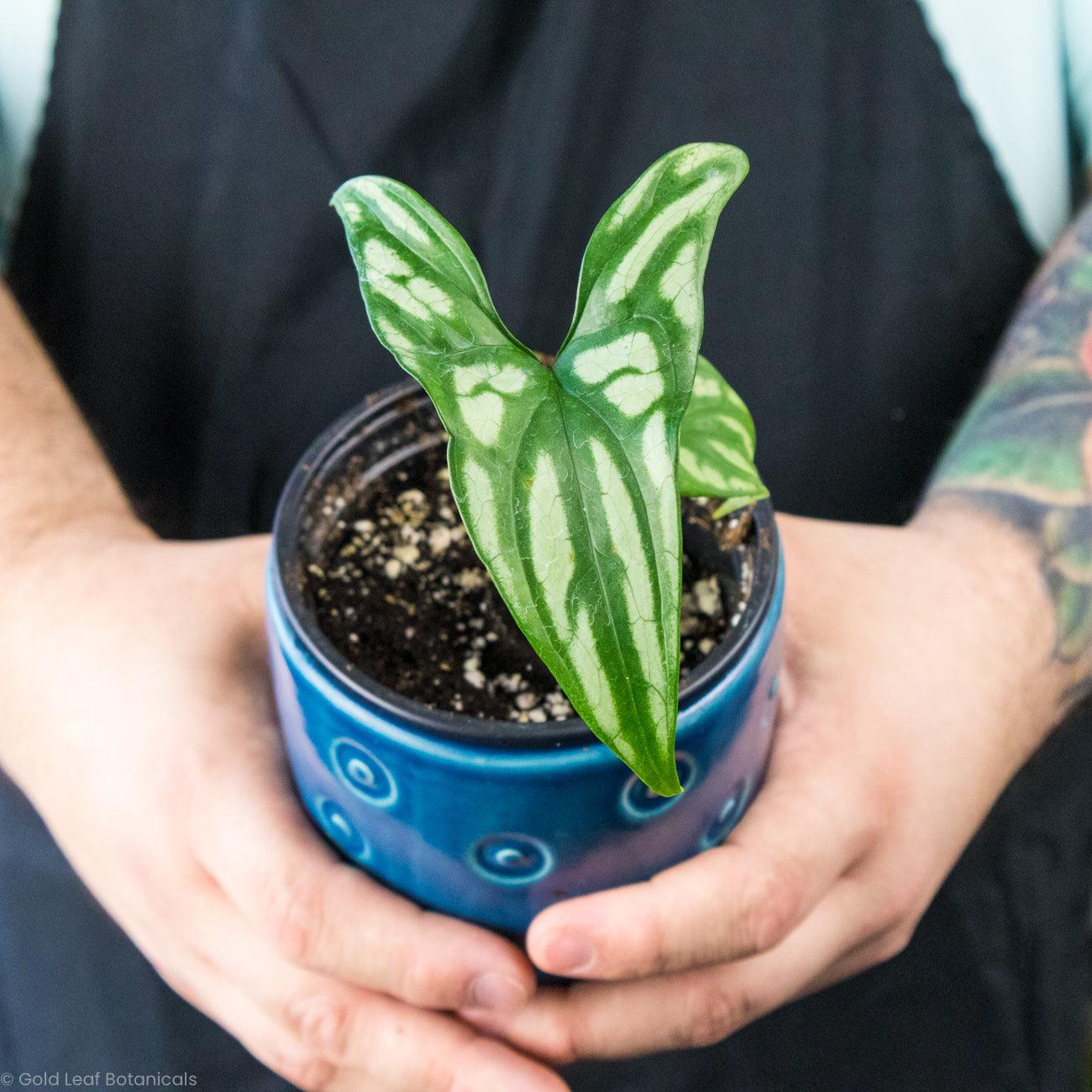Gold Leaf Botanicals
Cercestis Mirabilis
Cercestis Mirabilis
Couldn't load pickup availability
Cercestis Mirabilis
Cercestis mirabilis, sometimes referred to as the "wondrous cerces," may be the ideal choice for a plant enthusiast wishing to spice up their collection.
The jungles of Central and South America are home to this unusual and interesting plant species, which is distinguished by its enormous, heart-shaped leaves and dramatic purple and green colouring.

The ability of Cercestis mirabilis to alter its colour in reaction to its surroundings is one of its most intriguing characteristics.
Cercestis Mirabilis Care
Caring for a Cercestis Mirabilis is quite easy when compared to other tropical house plants. As with other plants, we should always try to recreate the conditions where this plant is found in the wild.
Our care instructions below will teach you how to grow this beautiful plant species in your own home.
Cercestis Mirabilis Light Requirements
Cercestis Mirabilis thrive in medium to bright, and can tolerate lower light very well. Be aware that they are not suited for direct sunlight, which may scorch their leaves.
Cercestis Mirabilis Water
Cercestis Mirabilis enjoy keeping their soil moist but not wet. In winter, we recommend allowing the top 2 inches of soil to dry out between waterings to prevent overwatering and root rot.
This plant is not drought tolerant, and extended periods of dryness will cause leaf edges to brown.
Humidity for a Cercestis Mirabilis
Your Cercestis Mirabilis will appreciate being placed in a humid environment such as a bathroom or a kitchen.
They are able to adapt to most Canadian home humidity just fine. You may mist your Cercestis Mirabilis, or place it close to other plants or on a pebble tray partly filled with water.
Temperature
Your Cercestis Mirabilis will thrive in temperatures ranging from 18-25ºC. Avoid abrupt temperature changes and cold drafts.
Cercestis Mirabilis Frequently Asked Questions
We have compiled a list of common questions that we are asked, which should help you learn more about this plant, and how to grow them for yourselves.
What is Cercestis mirabilis?
Cercestis mirabilis is an unusual aroid that originates from West Africa. Cercestis grows slowly and only produces around 4 leaves every year. Like other Philodendron plants, they grows as a vine that reaches up to 10 metres (30 feet) long. They grow so slow that there are not many pictures of climbing specimens.
Is Cercestis mirabilis a rare plant?
Yes. In Canada and many parts of the world a Cercestis Mirabilis is considered to be a rare plant. This is mainly due to the rate of growth of the plant. They grow so slowly that propagating them takes a lot of time.
Is Cercestis mirabilis a philodendron?
The Cercestis Mirabilis plant is a philodendron as it is part of the aroid family. Aroids are from the family Araceae and include common houseplants like aglaonemas, monsteras, philodendrons, pothos, and ZZ plants.
What is the common name for Cercestis Mirabilis?
They are sometimes referred to as an "African embossed plant" and also "African Mask Plant" because of their striking patterns and textures.
Is Mirabilis poisonous?
Cercestis Mirabilis plants are considered toxic if their leaves and stems are ingested. There are some people who cook and boil parts of the plant, however it is strongly suggested you do not do this.
Is Cercestis mirabilis a climber?
Yes, they love to climb, however they grow so slowly that it is incredibly rare to ever see one do so. They only grow 3 to 5 leaves every year, but if you give them enough years they will climb a moss pole or lattice.
What plant family is Cercestis mirabilis?
Cercestis is an aroid from the family Araceae. Other plants in this family include houseplants you may have heard of like aglaonemas, monsteras, philodendrons, pothos and ZZ plants.
How tall do Mirabilis grow?
They have been known to grow as tall as 10 meters, or 30 feet tall. Because of their slow growth it is rare to ever see them this tall, but it is possible. Please take photos if you see them this tall and share them with us!
Can you eat mirabilis?
It's reported that younger leaves can be cooked and eaten as a vegetable, but doing this is not recommended. Cercestis Mirabilis produce flowers that are used to make an edible dye for colouring on cakes and other desserts. They also produce seeds that can be crushed as a pepper substitute. We suggest enjoying the plant as a houseplant only.
Is mirabilis toxic to cats and dogs?
Like plants from this family they are considered to be toxic to pets. For all houseplants we suggest putting them out of reach of dogs, cats, and children. If your pet eats the leaves they will feel an uncomfortable sensation in their mouth that should prevent them from eating more in the future,.
How do you propagate Cercestis Mirabilis?
To propagate a Cercestis Mirabilis you should
- Cut a healthy stem with leaf nodes attached. You only need 1 or 2 leaves at the top of the stem.
- Dip the fresh cut in rooting hormone
- Now place the stem cutting in a glass of water and place the glass in a warm location.
- New roots will grow, and after a few weeks to a month you can transfer it to soil
Share with friends
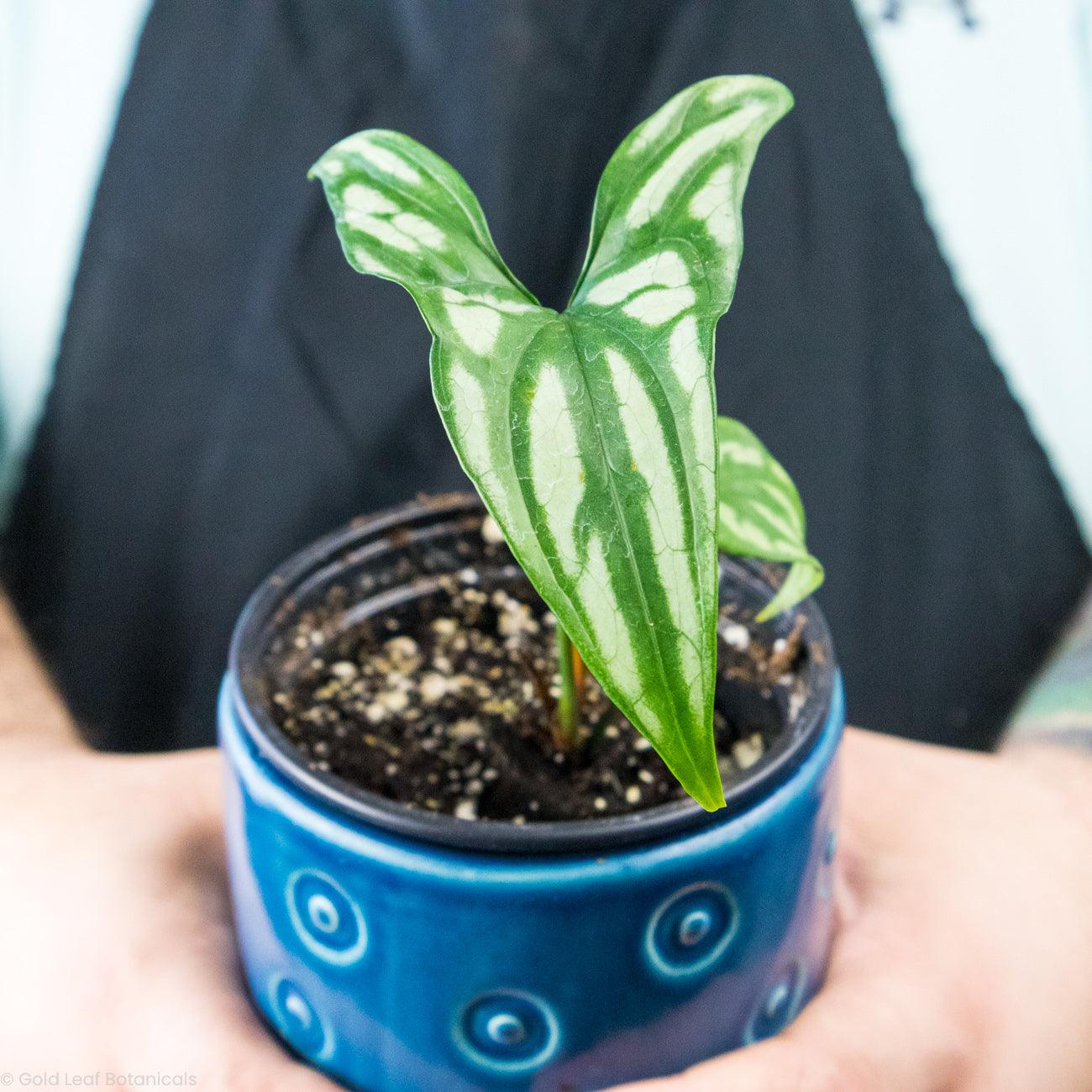
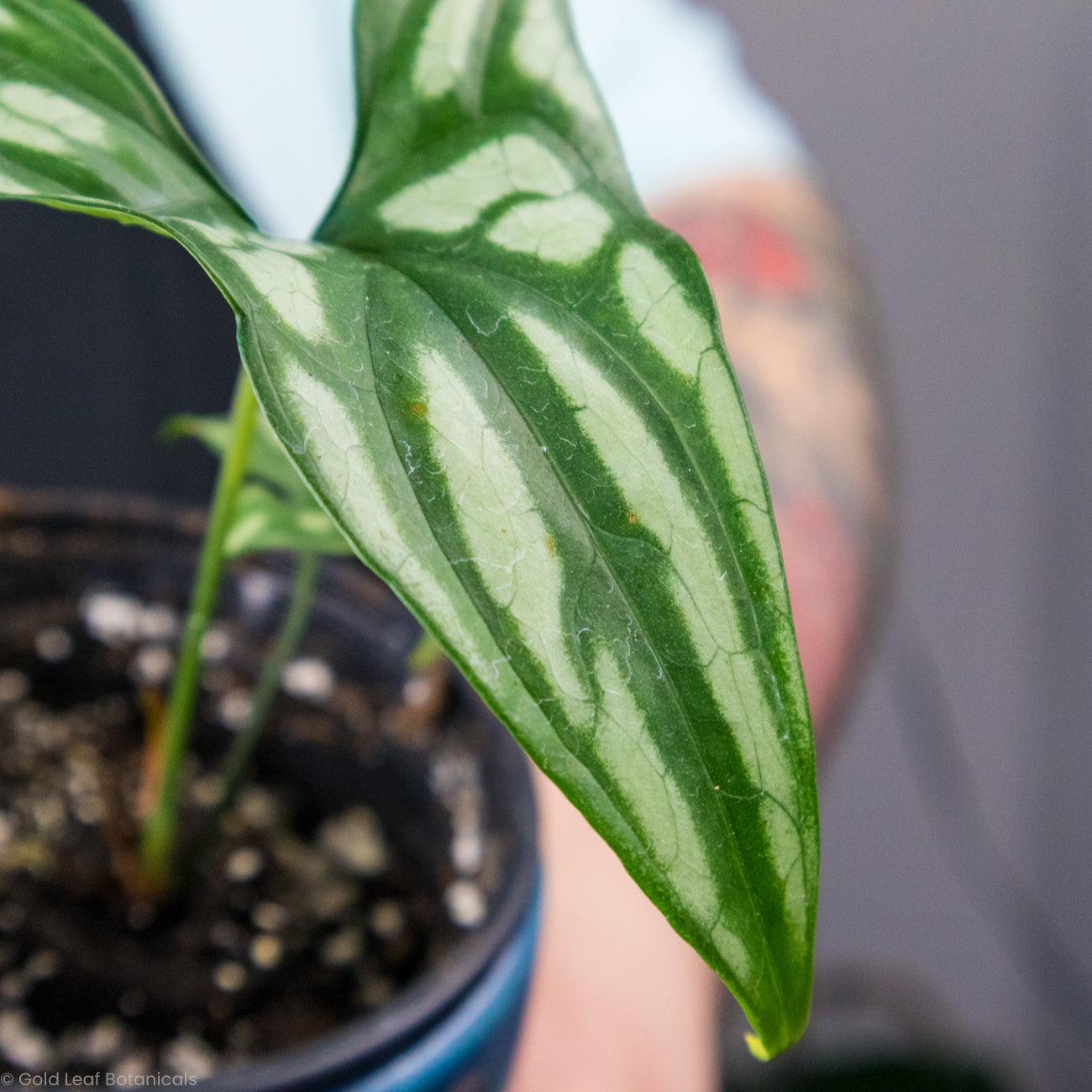
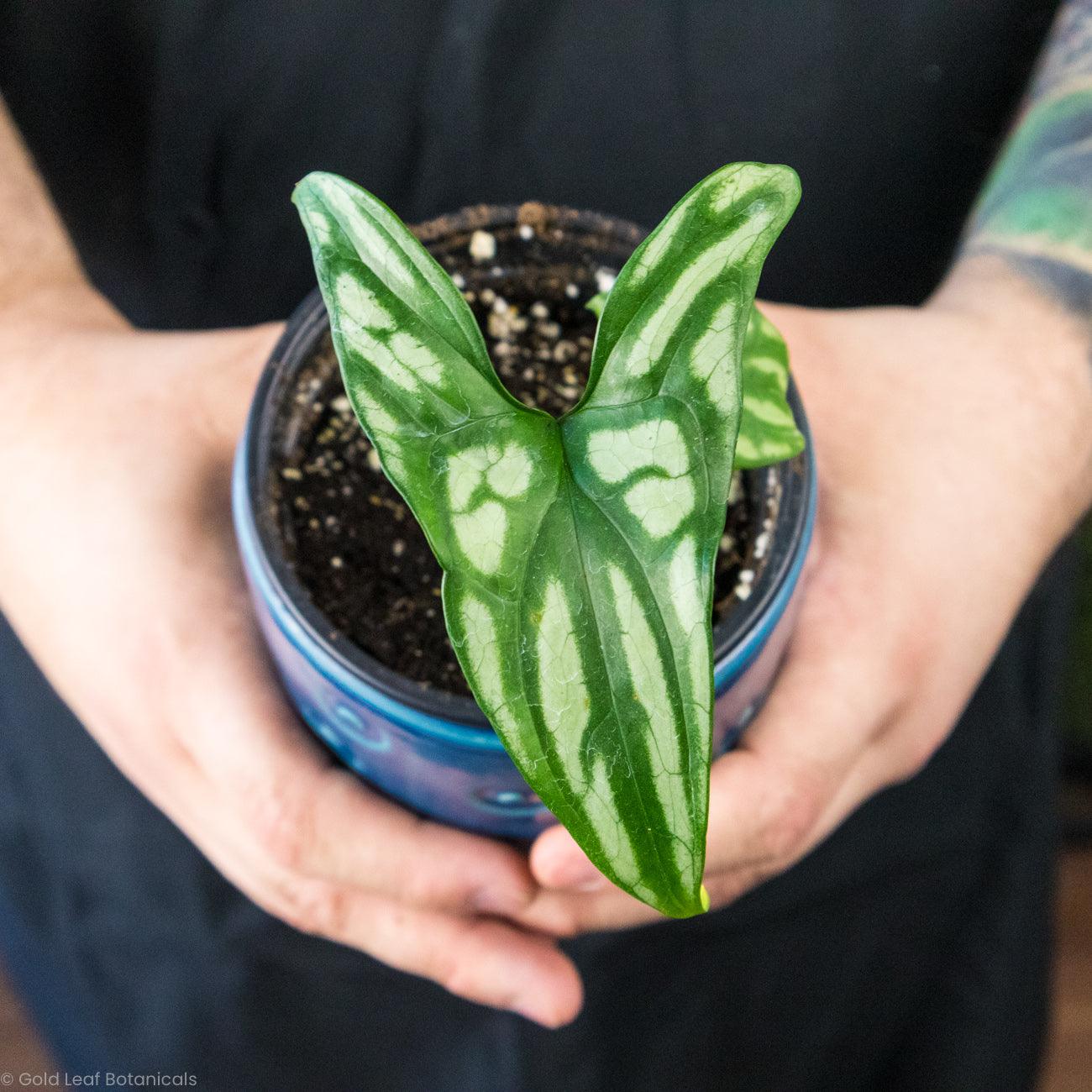
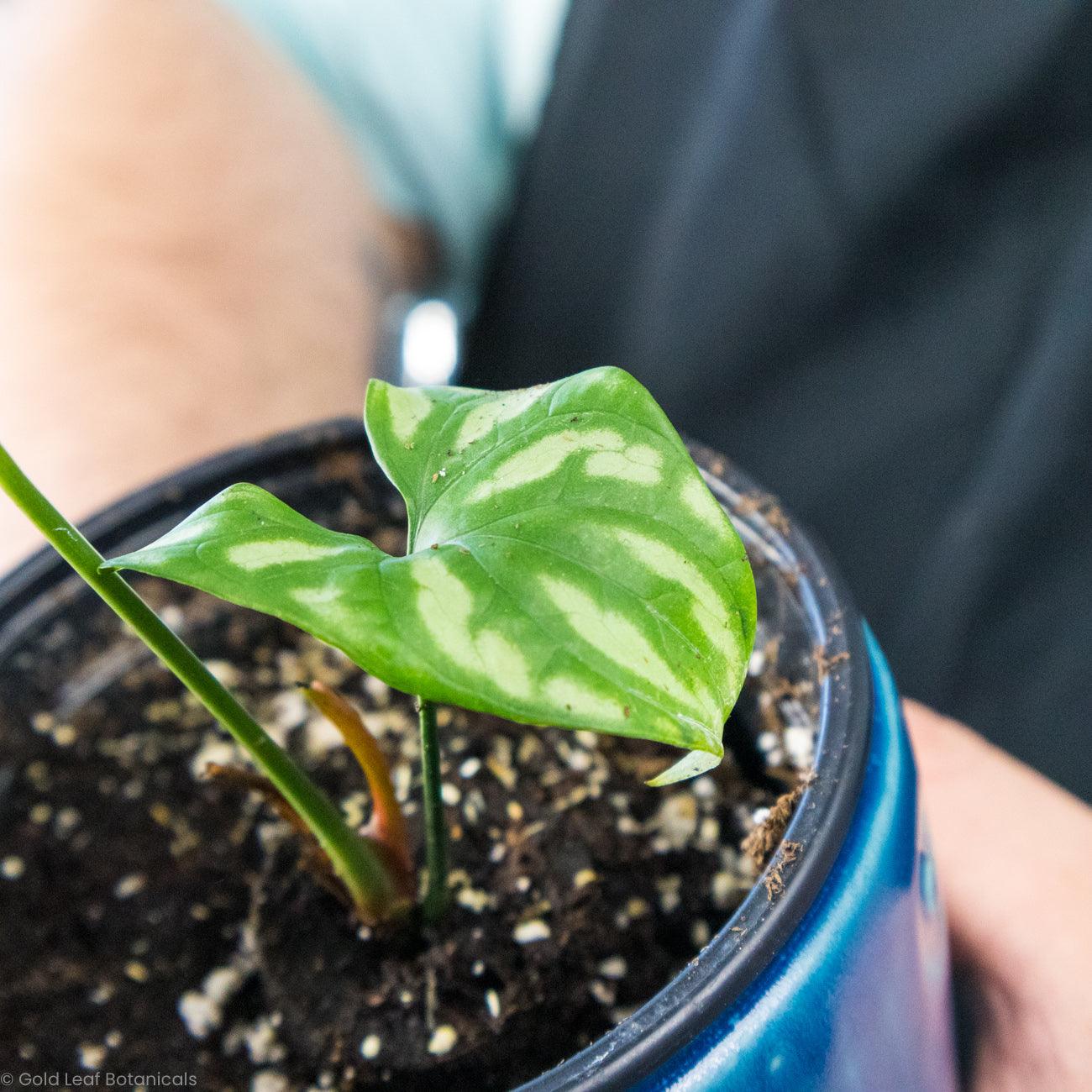
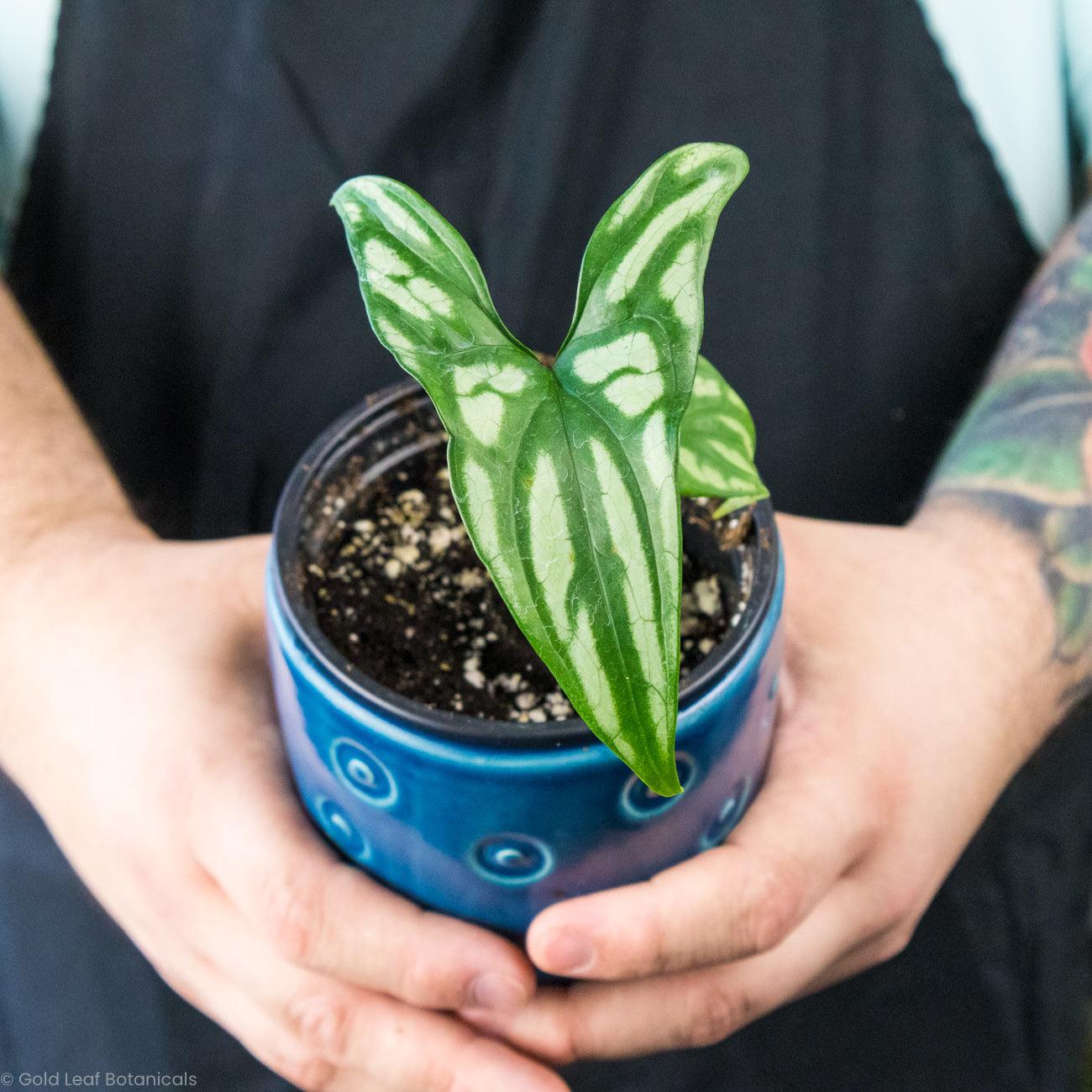
ENTER YOUR EMAIL TO SAVE 15% OFF YOUR FIRST ORDER
Be the first to know about new collections and exclusive offers.
Gold Leaf Gift Card
Share with friends!


